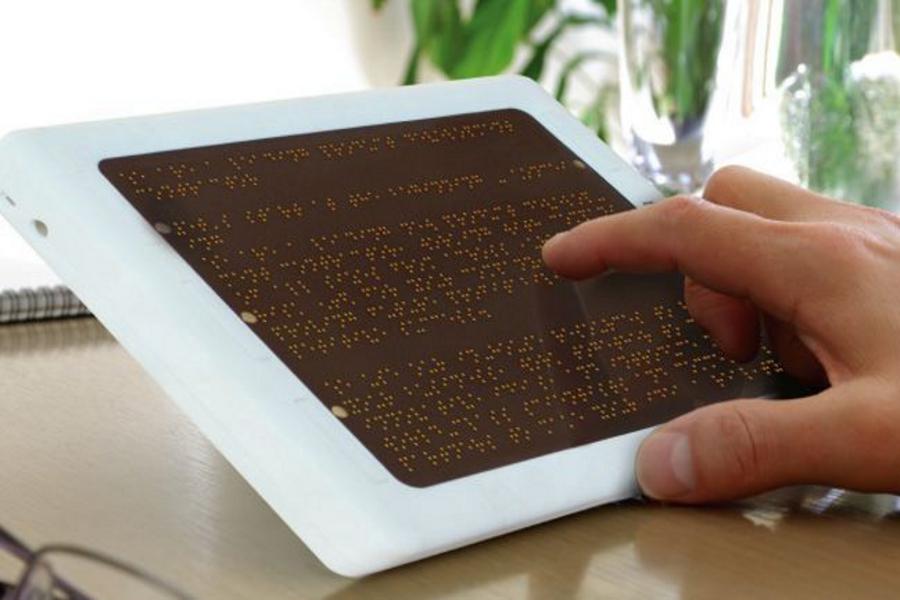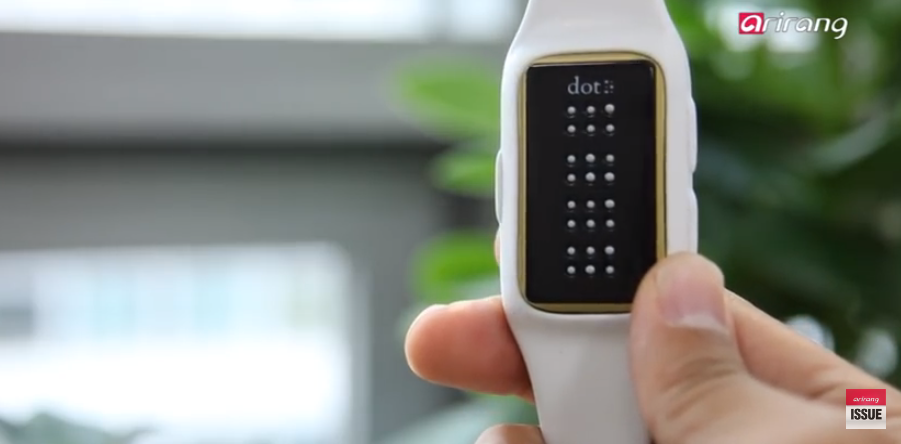Discover Ingenious Devices Created for the Visually Damaged
The advancement of cutting-edge devices for the visually impaired stands for a substantial innovation in accessibility and freedom. Technologies such as smart glasses with AI capabilities and mobile applications made to offer auditory descriptions are reshaping day-to-day experiences for customers.
Smart Glasses for Navigation

Smart glasses created for navigation are transforming the way visually impaired people connect with their atmosphere. These advanced tools make use of a mix of electronic camera modern technology, expert system, and auditory responses to provide real-time info about environments. By employing obstacle detection systems, smart glasses can inform customers to potential threats, enabling much safer mobility in both unfamiliar and acquainted setups.
The assimilation of GPS technology better enhances navigating capabilities, enabling individuals to receive acoustic instructions as they move. This hands-free approach not only cultivates self-reliance but also equips aesthetically damaged people to browse urban landscapes with enhanced self-confidence. Furthermore, lots of clever glasses are equipped with attributes that determine landmarks and road signs, offering contextual info that enhances the user experience.
Additionally, the development of these gadgets is continuously progressing, with business working to boost the precision of item acknowledgment and broaden the series of navigational attributes. As clever glasses become a lot more economical and obtainable, they hold the potential to dramatically change everyday life for aesthetically impaired users. Eventually, these cutting-edge tools represent a vital action toward inclusivity, offering boosted flexibility and a better feeling of freedom for people browsing the globe around them.

Mobile Apps for Daily Living
Just how can mobile applications boost the day-to-days live of aesthetically impaired people? Mobile apps are reinventing the method visually impaired users navigate their environments, take care of daily jobs, and gain access to information. These applications offer essential assistance with different functionalities, cultivating self-reliance and boosting high quality of life.
Several cutting-edge mobile applications are designed especially for daily living. For circumstances, apps like Be My Eyes link visually impaired customers with sighted volunteers using video clip telephone calls, allowing them to obtain real-time aid with jobs such as checking out tags or browsing unknown spaces. Seeing AI, developed by Microsoft, utilizes artificial intelligence to describe environments, read text, and recognize things, properly transforming a smartphone right into a powerful tool for everyday help.
In addition, navigating applications customized for the aesthetically damaged, such as Aira and BlindSquare, offer audio-based directions and ecological information, making it possible for individuals to traverse their environments safely and with confidence. Past navigation and instant help, mobile applications additionally support company and task management, with functions that assist users set suggestions, develop order of business, and track consultations. In summary, mobile applications function as important sources, equipping aesthetically damaged individuals to lead even more independent and satisfying lives.
Wearable Technologies for Help
Empowerment with modern technology is progressively evident in the realm of wearable devices made to help aesthetically impaired individuals. These cutting-edge tools integrate seamlessly into life, enhancing navigation and providing essential feedback to individuals. As an example, clever glasses outfitted with cameras can acknowledge faces and read text aloud, permitting individuals to communicate more with confidence in expert and social setups.
One more notable advancement is the web usage of haptic comments systems in wearable gadgets. These systems make use of vibrations or other tactile signals to communicate details regarding the individual's setting, such as obstacles or changes in surface, enhancing flexibility and security. Wearable technologies additionally include wristbands that link to smartphones, notifying users to notifications through subtle vibrations, hence improving connection without reliance on visual hints.
As these modern technologies remain to progress, they are not only enhancing freedom for aesthetically impaired people but also cultivating a higher feeling of incorporation in society. By connecting the space in between difficulties dealt with in daily living and the potential for freedom, wearable innovations act as pivotal devices in the mission for equal rights and empowerment for those with visual impairments.
Audio Description Tools
Audio description devices play a crucial function in boosting availability for aesthetically impaired people, supplying them with the capacity to involve with aesthetic media. Assistive technology for the blind. These tools offer narrated summaries of key aesthetic components in movies, tv programs, and live efficiencies, making sure that users can completely comprehend the context and emotions communicated via visuals
Audio summary can be incorporated right into numerous platforms, consisting of streaming solutions, movie theater screenings, and live movie theater. Several popular streaming services now include audio description as an ease of access function, allowing audiences to pick it conveniently. In enhancement to conventional media, specialized applications also exist, providing audio descriptions for art exhibitions, museums, and other social occasions.
The efficiency of audio description depends upon the skill of the storytellers, that must share visual details succinctly without taking away from the initial sound. Developments in this field are also leading the way for more tailored experiences, where users can readjust the degree of information and pacing according to their preferences.
Braille Innovations and Tools
Braille tools and developments have actually substantially changed the method aesthetically damaged individuals interact with message and information. Modern innovations have actually caused the advancement of functional devices that boost proficiency and freedom amongst individuals. Significantly, Braille show modern technologies have evolved, enabling for vibrant analysis experiences. These tools convert electronic message right into Braille, enabling customers to access a huge range of info on tablets, computer systems, and smart devices.
Additionally, portable Braille notetakers combine standard Braille input with modern capabilities, facilitating note-taking, organizing, and paper modifying on the move. Mobility aids for visually impaired users. These compact devices commonly include text-to-speech capacities, connecting the void in between Braille and acoustic information
Additionally, ingenious Braille printers have emerged, enabling individuals to produce check this site out Braille labels, records, and instructional products successfully. This availability fosters higher participation in educational and expert settings, ultimately promoting inclusivity.
Furthermore, research right into clever Braille innovations proceeds to expand. Devices that include expert system are being discovered to go right here provide real-time navigating help and contextual information, boosting the user experience in varied settings. Overall, these advancements show a commitment to equipping visually impaired people through technology, ensuring they can conveniently access and involve with the globe around them.

Final Thought
The improvement of innovative tools for the aesthetically damaged substantially improves independence and quality of life. These innovations not just foster better incorporation however additionally promote freedom in day-to-day activities, inevitably adding to an extra available and fair culture for visually damaged people.
As smart glasses become extra inexpensive and obtainable, they hold the possible to dramatically transform everyday life for visually impaired users. Mobile applications are changing the method visually impaired individuals navigate their environments, handle daily tasks, and accessibility details. Apps like Be My Eyes connect visually impaired individuals with sighted volunteers via video clip phone calls, enabling them to receive real-time aid with tasks such as reading labels or navigating unknown rooms.Furthermore, navigation apps customized for the aesthetically impaired, such as Aira and BlindSquare, use audio-based directions and ecological details, enabling customers to traverse their surroundings securely and with confidence.The advancement of innovative tools for the visually impaired considerably enhances freedom and high quality of life.